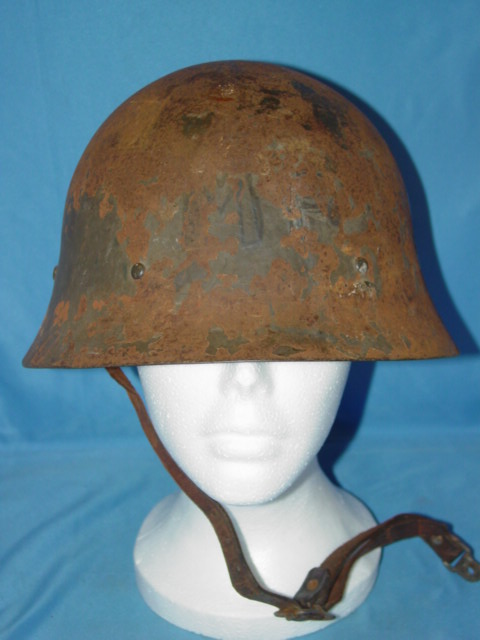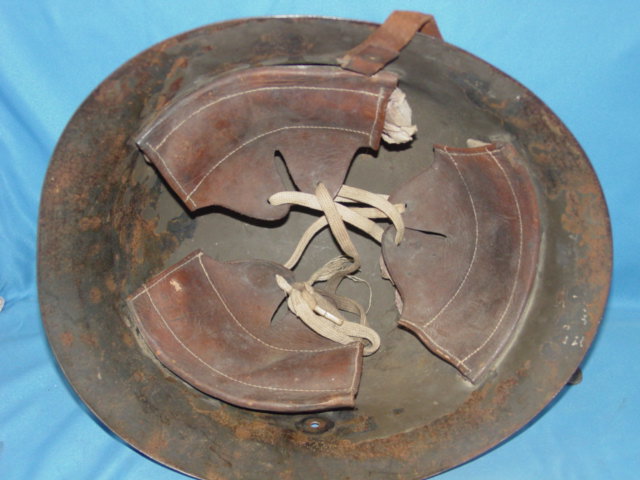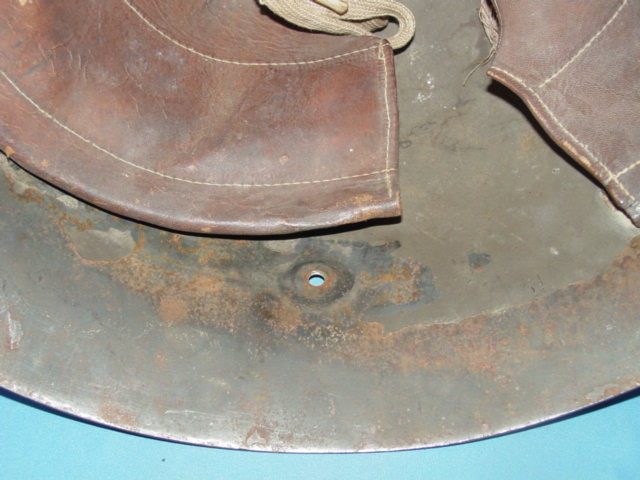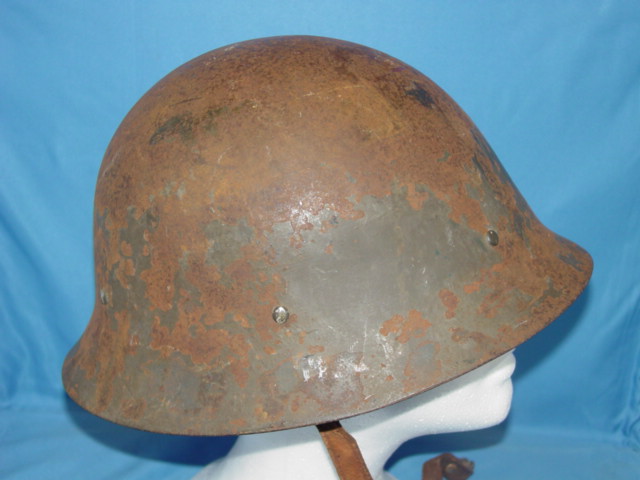|
WWII Sweedish Army M-1926 Combat Helmet -
The official policy of Sweden before, during, and after World War II is neutralism. It has held this policy for almost 2 centuries, since the end of the Napoleonic Wars in 1815.
In contrast to many other neutral countries, Sweden was not directly attacked during the war. It was however subject to British and Nazi German Naval blockades, which led to problems for the supply of food and fuels. From spring 1940 to summer 1941 Sweden and Finland were surrounded by Nazi Germany and the Soviet Union.
The item featured here is a fine example of a Sweedish M-1926 army combat helmet.

The design of the helmet consisted of an evenly shaped dome. Not much presence of a visor or
neckguard. Several rivets are spaced and lined up at the same level. They hold the liner
in place.
The rim of the helmet is of exposed type. The edges have been rounded off so as to not hurt
the soldier wearing it. Some of the original paint is retained. Some oxidation is visible.
This section of the website answers two of the most commonly asked questions regarding military
collectibles; What do I have? and how much is it worth?

The liner consists of three pads directly attached to the dome. This is a
unique feature since most helmets of the time had a ring that was secured
to the dome and the liner attached to it.
The pads extend towards the crown where each splits in two. the tips of the
extensions have holes punched through them. A lace is threaded through the
holes and is tied together. This forms a circle which is where the top of
the head of the soldier rests.
A leather chin strap is attached to a "D" ring riveted to the body. This
example only has one ring. The other one is missing.

|
Most modern military helmets saw their birth during World War One. The need to address the
multitude of head wounds in the trenches was the foundation for the widespread development
and deployment of helmets.
This section discusses several of the military helmets of the world.
The helmets from various armies came in a variety of designs. There were a large number
of different types developed. In many cases the use of the spilled over into non-military
applications such as police and civil defense. most of the helmets during WWI and WWII were
constructed of a combination of metal and leather.
|
|

The author is not aware that this type of headgear is currently being
reproduced.
However, there is no guarantee that it is not. in many cases
it is becoming more difficult to be able to tell the fake ones from the real ones because
the quality of the reproductions is improving. The collector must become familiarized with
the construction style and materials employed in the manufacturing of this headgear.
Attention to the details is critical in order to be able to determine the authenticity of
the collectible.
If you have an interest is seeing other Sweedish military helmets, you can do so by
going to our Sweedish Military headgear
identification guide. Where we cover multiple pieces.
| 




